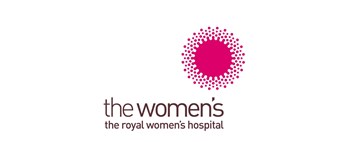For Clinicians / Researchers
This trial is registered on the following Clinical Trial Registries and has received funding as follows:
Clinicaltrials.gov Registry: NCT04372953
Australia and New Zealand Clinical Trials Registry (ANZCTR) Registry: ACTRN12618001686291
Funding Source:
This research has been funded by the Medical Research Future Fund (MRFF) Australian Government International Clinical Trials Collaborations Grant #1170957. There is no commercial sponsorship or industry funding for the POLAR Trial.
Trial Summary Video:
Contacts
The POLAR Trial Team’s email address is: POLAR@mcri.edu.au
The overall POLAR Coordinating Principal Investigator (CPI) is Prof David Tingay.
Prof Tingay can be reached at: david.tingay@rch.org.au or david.tingay@mcri.edu.au
Trial Delivery - Personnel
Yes, the Site PI and any nominated site sub-investigator must provide a CV and evidence of current GCP training.
Yes, each clinician member of the resuscitation team who will deliver PEEP (static or dynamic) within the delivery room, must show evidence that they have completed the required training activities and submit a completed PEEP Training Attestation Form.
Yes, it is the intention of the POLAR Trial Steering Committee (TSC) to encourage and support concurrent enrolment with other trials unless either trial compromises the integrity of the other trial outcomes. This includes trials with death and/or BPD as primary outcomes as long as the timing of interventions are sufficiently separated. This will enhance recruitment efforts at POLAR Trial clinical sites.
The policy on Concurrent Research is as follows:
- All randomized trials that are likely involve participants who are also eligible for the POLAR trial, must be discussed with the POLAR Executive Committee, and the protocols shared.
- All such studies may or may not be compatible with the POLAR trial, and full discussion will be undertaken to resolve potential for co-enrolment.
The PI at the recruiting hospital remains responsible for trial-related activities even when a participant is transferred to another hospital.
This also includes the collection of follow-up data at the 2-year mark.
Consent
Informed consent will be obtained via one of two methods depending on local ethics committee approval:
- Antenatal (prospective) consent approach; or
- Deferred (retrospective) consent approach.
Antenatal (prospective) consent is the preferred method of consent for the POLAR Trial.
- 1 for participant
- 1 for local site file
- 1 for medical notes (or scan into the Electronic Medical Record)
Yes, both the antenatal (prospective) and deferred (retrospective) consent forms will require localisation.
Country master consent forms will be provided to each site for localisation.
Protocol
Yes, the following interventions are permitted during the trial using existing site practice:
- Type, timing, and method of exogenous surfactant administration
- Physiological or delayed cord clamping/milking
- Suction of the mouth/nose to facilitate delivery of positive pressure and/or airway interventions
- Type and timing of post-natal steroid administration for respiratory indications.
- After 36 weeks PMA, site specific therapies for respiratory management as part of a chronic BPD bundles of care are permitted, as per local site practice (this includes the use of PEEP levels ≥10 cmH2O if standard practice at Site).
Yes, the following interventions are not permitted during the trial:
- The use of any form of Sustained Inflation (SI). For the purpose of the POLAR trial, a SI is defined as an intentional positive inflation pressure provided for longer than 5 sec via any ventilation or resuscitative positive pressure device.
- A delivery room resuscitative respiratory device that does not have a direct titratable PEEP delivery system via a T-piece, such as a flow-inflating device (even with a PEEP adaptor) or the Benveniste Valve™ (Dameca, Löwenstein Group, Rødovre, Denmark).
No, the intervention period can last up to 20 mins, but can be considered complete sooner, if the clinician believes the respiratory transition has occurred and/or the baby is ready for transfer.
In addition, the intervention does not have to continue to be given via facemask. Any interface can be used as long as it can reliably deliver the set CPAP PEEP level, for instance a nasal prong / bi-nasal prongs / nasal mask can be used to continue to deliver the intervention.
A CPAP system that does not have a direct titratable PEEP mechanism, such as a flow-inflating device or the Benveniste Valve cannot be used.
The POLAR trial does not mandate the CPAP delivery interface during the intervention, transfer to the NICU and in the NICU.
It is believed that for many preterm babies inadequate lung aeration at birth is the primary cause of bradycardia. As such we are interested in whether the Dynamic PEEP approach will reduce the need for Delivery Room intubations.
For all babies in the POLAR trial the process follows the NRP approach, with an escalation of respiratory interventions when a baby is compromised, and intubation being reserved for those infants not responding to reversible causes. The difference between the Static and Dynamic Arms is the increase in PEEP with each step in this group (e.g. when doing MR SOPA or similar).
For babies in the static arm the approach for HR<60 is as follows:
- Start PEEP 5-6 cmH2O
- Reassess
- If HR<60 - add PPV (and compressions and 100% O2)
- Reassess
- If still bradycardic (<100 bpm) - consider ETT.
- Once intubated, PEEP continues at 5-6cmH2O
For babies in the dynamic arm it would look more like:
- Start PEEP 8 cmH2O
- Reassess
- If HR<60 – incr. PEEP to 10, add PPV (and compressions and 100% O2)
- Reassess
- If still bradycardic <100 bpm increase PEEP to 12 and prepare to intubate
- Once intubated, PEEP must be 8 cmH2O, regardless of pre-intubation PEEP level.
The reassessments should be at least minutely, but during active resuscitation with CPR, the team leader can expedite the incremental steps. Consistent with any clinical trial, ultimately the clinicians are in charge of management and if concerned they should provide the clinical treatments’ they believe are most appropriate, including intubation. There are mechanisms in the trial design to manage protocol deviations if they occur.
NB: Once intubated in the dynamic arm - PEEP should be reduced to 8 cmH2O if it was >8, and then maintained at 8 cm H2O.
It is critically important that intervention group separation be strictly maintained during the initial 20 min intervention period.
After the 20 minute (maximum) initial intervention period PEEP levels can be applied as per standard practice at the Site. We recommend that the final PEEP level in use during the intervention period be continued until departure from the Delivery Room, especially if the infant has demonstrated clinical response.
If it is standard practice to do so at your Site, you can increase PEEP up to 8-10 cmH2O to prevent intubation after the 20 min intervention (Static Group). Similarly it is allowable to decrease PEEP below 8 cmH2O level for stable infants with FiO2 <0.30 after the 20 min intervention (Dynamic Group)
There is an accepted inversed U-shaped relationship between PEEP and Pulmonary Blood Flow (PBF); with both excessive and inadequate pressure levels negatively impacting PBF. There is very little good quality data in preterm infants indicating were PEEP levels may cause compromise.
The largest body of evidence in preterm infants exists during HFOV, where ECHO studies have demonstrated no negative impact on PBF or other cardiac markers during lung recruitment using pressures >20 cmH2O. No difference in cardiac parameters have been demonstrated in intubated lambs receiving high PEEP levels >8 cmH2O during respiratory transition.
PEEP practices in intubated preterm infants vary across the world, with many units using PEEP of 8 cmH2O, as well as many units using PEEP of 5 or 6 cmH2O.
Yes, the protocol allows for transient ‘rescue’ inflations of up to 2-3 s maximum in EU and UK sites to comply with local resuscitation practices, however, no specific sustained inflations. Note we also allow the PIP to be increased up to 35 cmH2O during rescue inflations as long as it is transient.
Adverse Events
The POLAR Trial population involves critically ill preterm infants and is anticipated to have a high number of AEs. Therefore, the protocol has designated study-specific AEs that are required to be reported within a certain timeframe. Refer to Section 11 of the protocol for a list of these AEs.
The POLAR Trial population involves critically ill preterm infants and is anticipated to have a high number of SAEs. Therefore, the protocol has designated study-specific SAEs that are required to be reported within a 24-hours of the event. Refer to Section 11 of the protocol for a list of these SAEs.
SAEs are reported as follows:
- Using the POLAR Expedited Safety Report Form and Coversheet
- Emailing completed Expedited Safety Report Forms and Coversheets to the POLAR Medical Monitor at: safetydesk.mctc@mcri.edu.au
- Record the SAE on the AE Log within the POLAR REDCap database.
Note: Participating Sites within the Netherlands require dual reporting of SAEs in real-time. SAEs experienced by Dutch participants must also be emailed to a.h.vankaam@amsterdamumc.nl
Database, Recruitment & Randomisation
There are no paper CRFs provided for the trial, excluding the Delivery Room Management CRF, hence all data entry should be completed directly, via the POLAR REDCap database.
The Delivery Room Management paper CRF is designed to provide a practical method of recording key clinical and physiological data points used in the NRP algorithm by the Delivery Room Team ‘scribe’. This data can then be transcribed into the POLAR study database at a later more suitable time.
Furthermore, concise CRF Completion Guidelines are provided to all participating sites which provide screenshots of all CRFs within the POLAR database and detailed instructions regarding data entry.
An infant is randomised into the POLAR Trial when he/she has been determined as eligible.
- Randomisation is via a paper-based envelope system.
- Sealed opaque allocation envelopes will be provided by the Data Coordinating Centre (DCCe) to each participating site just prior to site activation.
- Envelopes will be provided to each participating site in batches of 30 envelopes, 15 for each stratum.
- Each envelope will have the site ID and the randomisation code on a sticker on the outside and will be colour coded by stratum.
- The envelopes must be kept in close proximity to the Delivery Rooms at participating centres, at an appropriate location to be determined and documented during site start-up procedures.
- The envelopes in each stratum will be sequentially assigned to infants in that stratum.
- Refer to the POLAR Manual of Procedures document for further information.
Participating sites will be distributed envelopes in batches of 30 (15 per stratum), via registered post (national sites) or via courier (international sites), just prior to their pre-scheduled Site Initiation Meeting.
Sites will be required to acknowledge receipt of the randomization envelopes, once they have been received.
Once ten (10) randomisations have occurred in either stratum, sites must email the POLAR Trial Coordinator (POLAR@mcri.edu.au) so that the next batch of randomisation envelopes can be prepared and be mailed to the participating site.
Note: preparation of randomisation envelopes is not an automated procedure, and the DDCe will be relying on email notification from the participating site in order to commence preparation of the next batch of envelopes.
Study Documentation & Training
All documents relating to the trial will be placed on the trial website at www.POLARtrial.org.au which is intended to be a single point of access for everything.
Access to all study documents is via the “Members Portal” tab on the website homepage.
Note: you will require a username and password to gain access to the Members Portal.
Yes, all participating sites will be required to maintain an electronic Investigator Site File (eISF), via the Florence eBinders platform.
The Central Trial Coordinating Centre (TCC) will set up an electronic Site Binder for each participating centre prior to your site activation meeting and provide you with access. Prior to access being granted, training will need to be undertaken by the site investigator and site staff delegated to managing essential documents for the trial, by way of a 60-minutes online training module.
Yes, all participating sites will be required to maintain both an up to date Signature & Delegation of Authority Log and Training Log.
Both logs will be requested on a 6-monthly basis to ensure compliance with essential document maintenance.
Yes, a 90-minute Site Initiation Meeting will be delivered to each participating site prior to officially activating a centre to screening and enrolment.
The Site Initiation Meeting will include training on the protocol, delivery room and randomisation procedures, administration of the intervention within the Delivery Room, study conduct, operations and logistics and training on the REDCap database.
Monitoring
Yes, a risk-based monitoring approach has been implemented for the POLAR trial, whereby remote and central monitoring, including remote source data verification, will be the primary method of monitoring to be undertaking for this trial.
There will be four types of monitoring visits for this trial:
- Site Initiation Visit (SIV)
- Annual Remote Monitoring Visit (RMV)
- For-Cause Monitoring Visit
- Remote Close-Out Visit (COV)
In situations where for-cause monitoring visits have identified a need for an on-site monitoring visit to be conducted, the nominated POLAR monitor will contact the participating site to arrange a mutual time to visit the site to conduct the visit.








